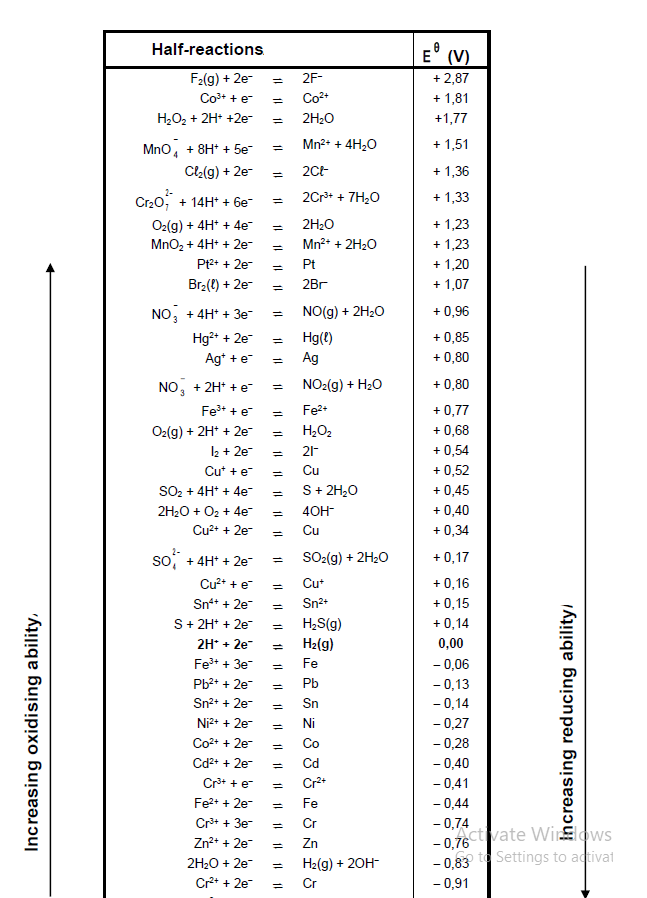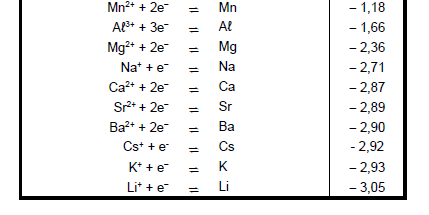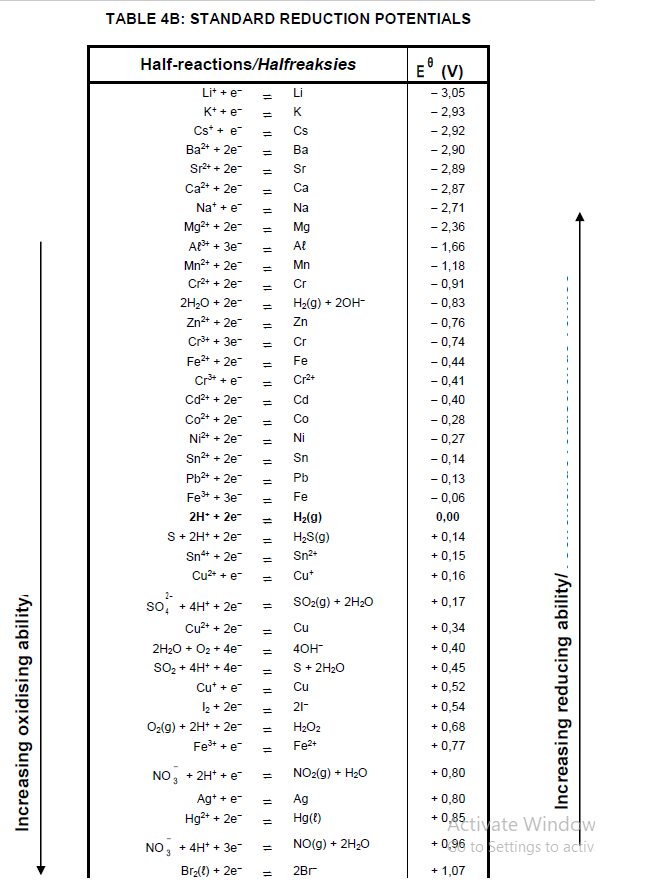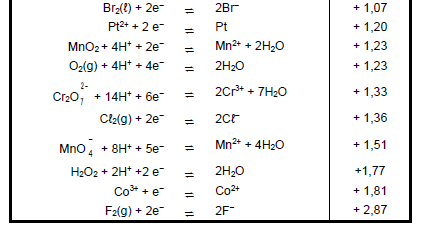PHYSICAL SCIENCES: CHEMISTRY PAPER 2 GRADE 12 QUESTIONS - AMENDED SENIOR CERTIFICATE PAST PAPERS AND MEMOS MAY/JUNE 2017
Share via Whatsapp Join our WhatsApp Group Join our Telegram GroupPHYSICAL SCIENCES: CHEMISTRY PAPER 2
GRADE 12
SENIOR CERTIFICATE EXAMINATIONS
MAY/JUNE2017
INSTRUCTIONS AND INFORMATION
- Write your examination number and centre number in the appropriate spaces on the ANSWER BOOK.
- This question paper consists of TEN questions. Answer ALL the questions in the ANSWER BOOK.
- Start EACH question on a NEW page in the ANSWER BOOK.
- Number the answers correctly according to the numbering system used in this question paper.
- Leave ONE line between two subquestions, for example between QUESTION 2.1 and QUESTION 2.2.
- You may use a non-programmable calculator.
- You may use appropriate mathematical instruments.
- You are advised to use the attached DATA SHEETS.
- Show ALL formulae and substitutions in ALL calculations.
- Round off your FINAL numerical answers to a minimum of TWO decimal places.
- Give brief motivations, discussions, et cetera where required.
- Write neatly and legibly.
QUESTION 1: MULTIPLE-CHOICE QUESTIONS
Various options are provided as possible answers to the following questions. Write down the question number (1.1–1.10), choose the answer and make a cross (X) over the letter (A–D) of your choice in the ANSWER BOOK.
EXAMPLE:![]()
1.11
1.1 The boiling point of a compound is the …
- minimum temperature at which it boils.
- average temperature at which it boils across all possible atmospheric pressures.
- maximum temperature at which it boils.
- temperature at which its vapour pressure equals atmospheric pressure. (2)
1.2 Which ONE of the following organic reactions will take place only when exposed to light?
- CH2CH2 + H2 → CH3CH3
- CH3CH3 → CH2CH2 + H2
- CH2CH2 + Cℓ2 → CH2CℓCH2Cℓ
- CH3CH3 + Cℓ2 → CH3CH2Cℓ + HCℓ (2)
1.3 The energy change during a chemical reaction is known as …
- bond energy.
- heat of reaction.
- activation energy.
- activated complex. (2)
1.4 Which ONE of the descriptions below is TRUE for a chemical reaction in equilibrium?
| CONCENTRATIONS OF REACTANTS AND PRODUCTS | FORWARD AND REVERSE REACTION RATES | |
| A | Remain constant | Equal |
| B | Remain constant | Not equal |
| C | Equal | Equal |
| D | Not equal | Not equal |
1.5 The complete combustion of ethane is represented by the balanced equation below.
2C2H6(g) + 7O2(g) → 4CO2(g) + 6H2O(g)
The maximum volume of gas that can be produced by the complete combustion of 100 cm3 of ethane is:
- 200 cm3
- 400 cm3
- 500 cm3
- 600 cm3 (2)
1.6 The reaction below reaches equilibrium in a closed container.
N2(g) + 3H2(g) ⇌ 2NH3(g) + energy
Consider the following statements regarding the equilibrium above:
- When one N2 molecule combines with three H2 molecules, two NH3 molecules decompose at the same time.
- An iron oxide catalyst increases the amount of ammonia produced in this reaction.
- When the temperature increases, the equilibrium constant (Kc) for this reaction will increase.
Which of the above statements is/are CORRECT?
- I only
- I and II only
- I and III only
- I, II and III (2)
1.7 Which ONE of the following pairs represents the conjugate acid and the conjugate base of HPO2- 4?
| CONJUGATE ACID | CONJUGATE BASE | |
| A | PO3-4 | H2PO-4 |
| B | H2PO-4 | PO3-4 |
| C | H2PO-4 | H3PO4 |
| D | H2PO2-4 | PO2-4 |
1.8 A simplified diagram for the extraction of aluminium is shown below.

Consider the following statements regarding the process above:
- The electrolyte is a mixture of cryolite and aluminium oxide.
- O2(g) is produced at the anode.
- The half-reaction at the cathode is Aℓ3+(aq) + 3e- → Aℓ(s).
Which of the above statements are CORRECT?
- I and II only
- II and III only
- I and III only
- I, II and III (2)
1.9 Which ONE of the half-cells below will result in the HIGHEST emf when it is used as a cathode, together with a zinc half-cell as anode, in a standard galvanic cell?
- Cu2+(aq) | Cu(s)
- Fe2+(aq) | Fe(s)
- Ag+(aq) | Ag(s)
- Sn2+(aq) | Sn(s) (2)
1.10 Which of the following processes are ALL involved in the preparation of ammonium sulphate?
| A | Ostwald process | Contact process | Haber process |
| B | Fractional distillation of liquid air | Ostwald process | Contact process |
| C | Fractional distillation of liquid air | Haber process | Contact process |
| D | Fractional distillation of liquid air | Haber process | Ostwald process |
(2)
[20]
QUESTION 2 (Start on a new page.)
2.1 Define the term functional group of organic compounds. (2)
2.2 Write down the:
2.2.1 Structural formula of the functional group of aldehydes (1)
2.2.2 Name of the functional group of carboxylic acids (1)
2.3 The IUPAC name of an organic compound is 2,4-dimethylhexan-3-one.
For this compound, write down the:
2.3.1 Homologous series to which it belongs (1)
2.3.2 Structural formula (3)
2.4 Write down the IUPAC names of the following compounds:
2.4.1  (3)
(3)
2.4.2  (2)
(2)
[13]
QUESTION 3 (Start on a new page.)
The boiling points of some organic compounds are given in the table below. Y represents an unknown boiling point.
| COMPOUND | BOILING POINT (°C) | |
| A | Methanol | 64,7 |
| B | Ethanol | 78,3 |
| C | Propan-1-ol | 97,2 |
| D | Butan-1-ol | 117,7 |
| E | Butan-2-ol | 99,5 |
| F | 2-methylpropan-1-ol | Y |
| G | 2-methylpropan-2-ol | 82,5 |
3.1 For the compounds listed above, write down the:
3.1.1 Structural formula of compound F (3)
3.1.2 LETTER that represents a POSITIONAL isomer of compound E (1)
3.1.3 LETTER that represents a CHAIN isomer of compound E (1)
3.2 The boiling points increase from compound A to compound D.
3.2.1 Give a reason for this increase in terms of the molecular structure. (1)
3.2.2 Name the intermolecular force in these compounds responsible for this increase. (1)
3.3 Consider the boiling points given below.
| 85 °C | 108 °C | 122 °C |
3.3.1 From these boiling points, choose the boiling point represented by Y in the table above. (1)
3.3.2 Fully explain how you arrived at the answer to QUESTION 3.3.1. (4)
3.4 Hydrogen bonding is responsible for the relatively high boiling points of compounds A to G in comparison with hydrocarbons of similar molecular size.
Draw TWO structural formulae of compound A. Use a dotted line to show the hydrogen bonding between the two structural formulae. (2)
3.5 Compound B reacts with propanoic acid in the presence of concentrated sulphuric acid.
Write down the:
3.5.1 Type of reaction that takes place (1)
3.5.2 Structural formula of the organic product formed (2)
[17]
QUESTION 4 (Start on a new page.)
The flow diagram below shows how an alkene can be used to prepare other organic compounds. The letters A to G represent different organic reactions.

4.1 Write down the type of reaction represented by:
4.1.1 A (1)
4.1.2 B (1)
4.1.3 E (1)
4.2 Write down the IUPAC name of compound X. (2)
4.3 For reaction D, write down:
4.3.1 The type of elimination reaction (1)
4.3.2 TWO reaction conditions (2)
4.4 Write down the:
4.4.1 FORMULA of an inorganic reactant needed for reaction F (1)
4.4.2 Balanced equation, using structural formulae, for reaction G (4)
[13]
QUESTION 5 (Start on a new page.)
The apparatus below is used to investigate one of the factors that affects the rate of decomposition of hydrogen peroxide, H2O2. The balanced equation for the reaction is:
2H2O2(aq) → 2H2O(ℓ) + O2(g)
Two experiments are conducted. The reaction conditions are as follows:
Experiment I: 50 cm3 of hydrogen peroxide is allowed to decompose at 30 °C.
Experiment II: 50 cm3 of hydrogen peroxide decompose at 30 °C in the presence of copper(II) oxide powder (CuO).

The results of the investigation are summarised in the table below.
| Experiment | Total volume of O2 produced (dm3) | Time taken for complete decomposition (min.) |
| I | 0,4 | 12,3 |
| II | 0,4 | 5,8 |
5.1 For this investigation, write down the function of the:
5.1.1 Graduated syringe (1)
5.1.2 Copper(II) oxide (1)
5.2 How will you know when the reaction is completed? (1)
5.3 Write down the independent variable for this investigation. (1)
5.4 Use the collision theory to fully explain the difference in reaction rates of experiment I and experiment II. (3)
5.5 The graphs below show changes in the potential energy during the decomposition of hydrogen peroxide in experiment I and experiment II.

5.5.1 Is energy ABSORBED or RELEASED during this reaction? Give a reason for the answer. (2)
5.5.2 Which ONE of the curves, A or B, represents experiment II? (1)
5.6 Calculate the rate, in mol∙dm-3∙min-1, at which 50 cm3 of hydrogen peroxide decomposes in experiment II. Assume that 1 mole of gas occupies a volume of 25 dm3 at 30 °C. (6)
[16]
QUESTION 6 (Start on a new page.)
6.1 Consider the balanced equation for a reversible reaction below.
N2(g) + O2(g) ⇌ 2NO(g)
6.1.1 What is meant by the term reversible reaction? (1)
The sketch graph below shows the relationship between the value of the equilibrium constant (Kc) for this reaction and temperature.
6.1.2 Is the reaction ENDOTHERMIC or EXOTHERMIC? (1)
6.1.3 Fully explain the answer to QUESTION 6.1.2. (3)
How will EACH of the following changes affect the amount of NO(g) at equilibrium?
Choose from INCREASES, DECREASES or REMAINS THE SAME.
6.1.4 More N2(g) is added. (1)
6.1.5 The pressure is increased by decreasing the volume. (1)
6.2 Initially 336 g titanium (Ti) and 426 g chlorine gas (Cℓ2) are mixed in a sealed 2 dm3 container at a certain temperature. The reaction reaches equilibrium according to the following balanced equation:
Ti(s) + 2Cℓ2(g) ⇌ TiCℓ4(s)
At equilibrium it is found that 288 g titanium is left in the container.
6.2.1 Calculate the equilibrium constant (Kc) for the reaction at this temperature. (8)
6.2.2 More titanium is now added to the equilibrium mixture. How will this change affect the yield of TiCℓ4(s)?
Choose from INCREASES, DECREASES or REMAINS THE SAME. (1)
[16]
QUESTION 7 (Start on a new page.)
7.1 Ethanoic acid (CH3COOH) is an acid that ionises incompletely in water according to the following balanced equation:
CH3COOH(aq) + H2O(ℓ) → CH3COO─(aq) + H3O+(aq)
7.1.1 Write down the term used for the underlined phrase above. (1)
7.1.2 An ethanoic acid solution has a pH of 4 at 25 °C. Calculate the concentration of the hydronium ions, H3O+(aq) in the solution. (3)
7.2 A standard solution of potassium hydroxide (KOH) is prepared in a 250 cm3 volumetric flask. During a titration, 12,5 cm3 of this solution neutralises 25 cm3 of a 0,16 mol∙dm-3 ethanoic acid solution.
The balanced equation for the reaction is:
CH3COOH(aq) + KOH(aq) → CH3COOK(aq) + H2O(ℓ)
7.2.1 Define a base according to the Arrhenius theory. (2)
7.2.2 Calculate the mass of potassium hydroxide used to prepare the solution above in the 250 cm3 volumetric flask. (7)
7.2.3 Will the pH of the solution in the conical flask at the end point be GREATER THAN 7, SMALLER THAN 7 or EQUAL TO 7? (1)
7.2.4 Explain the answer to QUESTION 7.2.3 with the aid of a balanced chemical equation. (3)
[17]
QUESTION 8 (Start on a new page.)
The electrochemical cell represented by the cell notation below is used to investigate the relationship between the concentration of X2+(aq) and the emf of the cell. The concentration of Zn2+(aq) and the temperature are kept at standard conditions.
Zn(s) | Zn2+(aq) || X2+(aq) | X(s)
The graph below shows the results obtained.

8.1 For this investigation, write down the:
8.1.1 Dependent variable (1)
8.1.2 Name of an instrument needed to measure the emf of the cell (1)
8.1.3 Name of the component of the cell that ensures electrical neutrality (1)
8.1.4 Values of TWO standard conditions needed to ensure that the standard emf is obtained (2)
8.2 Write down the conclusion that can be drawn from the results. (2)
8.3 Identify electrode X with the aid of a calculation. (5)
8.4 Write down the overall (net) cell reaction that takes place when this cell is in operation. (3)
[15]
QUESTION 9 (Start on a new page.)
The simplified diagram below represents a cell used to electroplate an iron medal with a thin layer of gold.

9.1 Is this an ELECTROLYTIC or a GALVANIC cell? (1)
9.2 Which electrode, P or the Medal, is the anode? (1)
9.3 Write down the:
9.3.1 Half-reaction that takes place at electrode P (2)
9.3.2 Oxidation number of gold (Au) in the electrolyte (1)
9.3.3 Energy change that takes place in this cell (1)
9.3.4 Visible change that occurs on electrode P after the cell functions for a while (1)
9.4 Besides improving appearance, state ONE other reason why the medal is electroplated. (1)
9.5 State ONE of the two possible changes that should be made to the cell above to electroplate the medal with silver instead of gold. (1)
[9]
QUESTION 10 (Start on a new page.)
10.1 The letters A to F in the table below represent some fertilisers and raw materials used in the preparation of fertilisers.
| A | Sulphur | B | Air |
| C | Methane | D | Potasium chloride |
| E | Ammonium sulphate | F | Ammonium nitrate |
Write down the:
10.1.1 LETTERS representing TWO raw materials used in the preparation of compound F (2)
10.1.2 NAME or FORMULA of the acid needed to prepare compound F (1)
10.1.3 LETTER representing the solid raw material used in the contact process (1)
10.1.4 Balanced equation for the preparation of compound E (3)
10.1.5 LETTER representing the raw material that supplies the primary nutrient needed for development of flowers (1)
10.2 A 2 kg bag of fertiliser is labelled as follows:
2 : 3 : 2 (22)
Calculate the mass of the:
10.2.1 Phosphorous in the bag (3)
10.2.2 Filler in the bag (3)
[14]
TOTAL: 150
| NAME | SYMBOL | VALUE |
| Standard pressure | pθ | 1,013 x 105 Pa |
| Molar gas volume at STP | Vm | 22,4 dm3∙mol-1 |
| Standard temperature | Tθ | Tθ 273 K |
| Charge on electron | e | e -1,6 x 10-19 C |
| Avogadro’s constant | NA | NA 6,02 x 1023 mol-1 |
TABLE 2: FORMULAE
n = m | n = N NA |
| c = n V or c = m MV | n = V Vm |
| caVa= na cbVb nb | pH= -log[H3O+] |
| Kw = [H3O+][OH-] = 1x10-14 at 298K | |
| Eθ cell = Eθ cathode – Eθ anode Eθ cell = Eθ reduction – Eθ oxidation Eθ cell = Eθ oxidising agent – Eθ reducing agent |

TABLE 4A: STANDARD REDUCTION POTENTIALS



